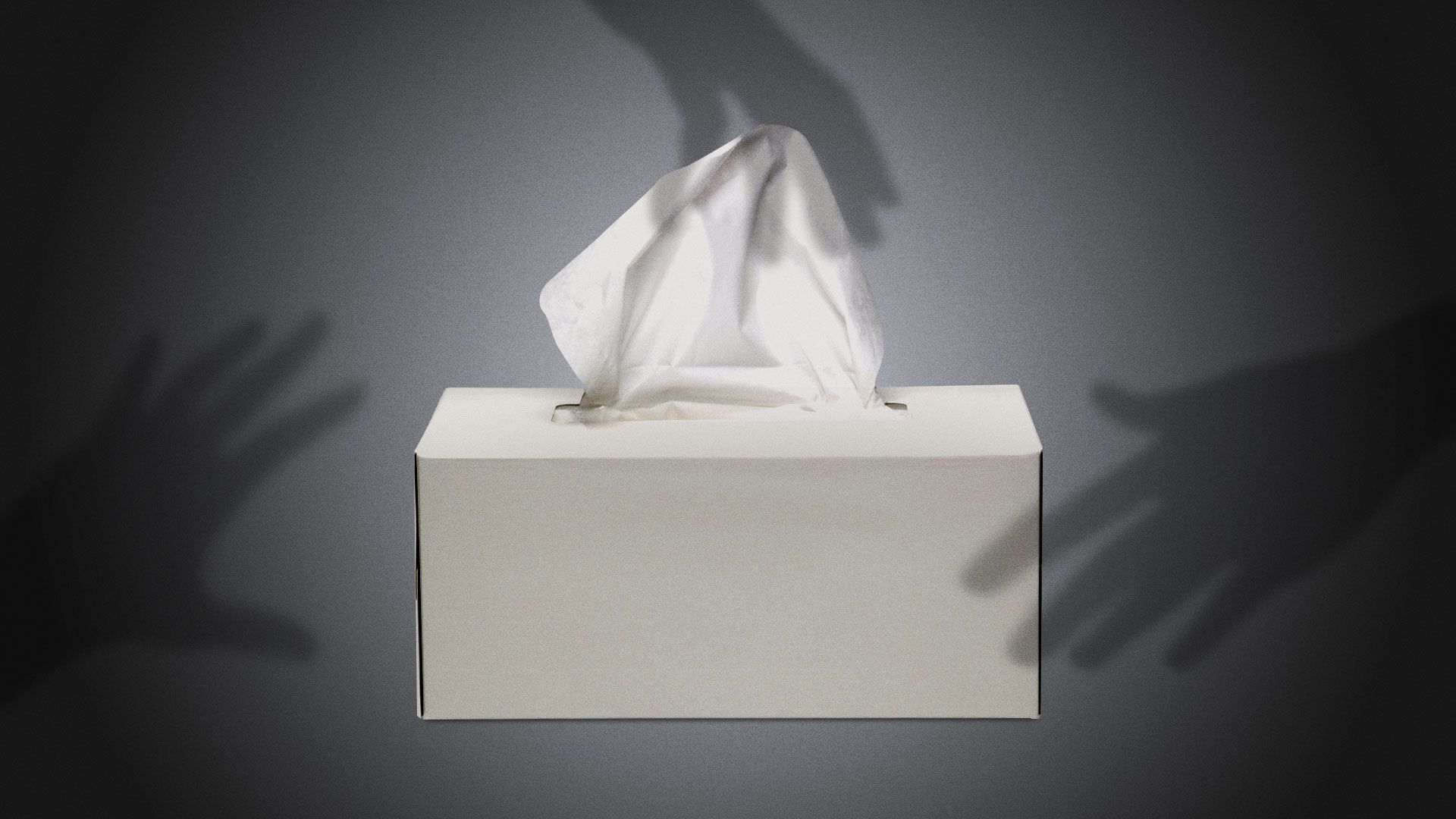
Illustration: Eniola Odetunde/Axios
With the flu season just around the corner, medical experts are worried about the likelihood of battling a COVID-19 pandemic and the influenza season at the same time.
The big picture: There are two main scenarios: a winter from hell with overwhelmed hospitals, unknown effects from virus co-infections, misdiagnoses resulting in wrong treatments, and a surge in deaths, or a flu season mitigated by COVID-19 measures and other steps people still have time to take.
It's possible that if most people practice social-distancing measures and hygiene measures taken for COVID-19, the flu season may be much lighter than normal, as seen in the Southern Hemisphere.
- And current COVID-19 hotspots continue to slow.
- But young children tend to be a big source of flu transmission, and many are starting school now, potentially negating the effects of COVID-19 control measures on the spread of the flu.
On the one hand: The nightmare scenario reflects multiple possible problems...
1. Hospitals could get completely overwhelmed as both flu and COVID-19 can require intensive care, including ventilator use. Some areas are already strained by the pandemic.
- "It could be daunting ... because flu is going to be competing for the same resources as the coronavirus in terms of hospital beds, ICU beds, ventilators, personal protective equipment and even the reagents for diagnostics testing," Amesh Adalja, senior scholar at Johns Hopkins Center for Health Security, tells Axios.
2. Co-infections of the viruses have unknown consequences, which is worrisome when COVID-19 already has a confounding range of symptoms.
- "The bigger issue is the unknown of what co-infection might mean. We don't really know what would happen if you are dually infected," says Thomas LaVeist, dean of the School of Public Health and Tropical Medicine at Tulane University.
3. Without better access to diagnostics, people may not know what type of respiratory illness they have. Both can have similar symptoms but require different treatment protocols.
- "Basically, employers, school systems and others are going to have to make a decision. Will we just assume that if we see a surge in influenza-like illnesses, we're going to behave as if it's COVID-19?" asks Julie Fischer, senior technical adviser for global health at CRDF Global.
- This could mean people getting the wrong treatment or quarantining for weeks unnecessarily, she adds.
4. COVID-19 and flu data could get conflated, as both fall under the influenza-like illnesses the CDC tracks nationwide during the flu season.
- However, the CDC's large database offers historical numbers for various flu strains and severity to compare against this unusual season with COVID-19, Jules van Binsbergen, finance professor at the Wharton School of the University of Pennsylvania, points out.
On the other hand: The flu season could be mitigated.
1. More Americans may get the flu shot this year.
- Projections show an expected 20% rise in Americans getting a flu shot this year, Eric Percher, senior analyst at Nephron Research, writes in a market research note.
- "Getting a flu vaccine will be more important than ever" this season, a CDC spokesperson said. Seasonal flu causes millions of illnesses, hundreds of thousands of hospitalizations, and tens of thousands of deaths in the U.S.
- The CDC is buying an additional 2 million doses of pediatric and 9.3 million doses of adult influenza vaccine this year.
- Van Binsbergen says in a recent paper they found that the flu shot could save thousands of life years and would cost a relatively small amount of money, around $3.85 billion, compared to the trillions already spent on COVID-19.
- "Look at how much we are willing to invest to save lives for COVID. We are shutting down the economy, we have large unemployment, we are paying a very large cost to curtail deaths from COVID," he says. Van Binsbergen is suggesting mandatory flu shots for school children this year.
2. COVID-19 may have led to better hygiene habits that could lesson viral transmission. "Those measures that help reduce the spread of COVID are the same measures that would help reduce the spread of influenza," LaVeist says.
Yes, but: Better diagnostics will be key.
- "Once we hit cold and flu season, when some of the very general symptoms associated with COVID-19 like fever and cough become more common, then it's going to be a very complex problem in the areas where testing is still being controlled based on symptoms and exposure risks," Fischer says.
- Another problem is that a reagent commonly used for both tests is running low, Adalja says. "Hopefully, there are some dual tests coming online where you can test simultaneously for influenza and the coronavirus."
- But Fischer says sometimes multiplex tests can have a "trade-off in sensitivity," which would be concerning because "we're still having problems of sensitivity" for COVID-19 tests.
The bottom line: "Yes, this is a mess. But I do think there's time to make sure that this opportunity is not missed," van Binsbergen says.
